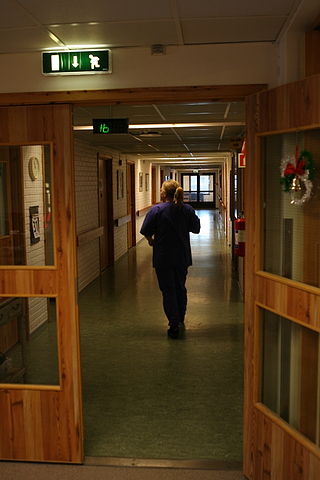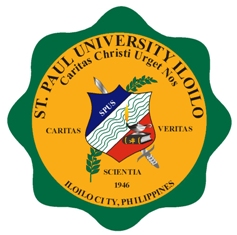
A registered nurse (RN) is a nurse who has graduated or successfully passed a nursing program from a recognized nursing school and met the requirements outlined by a country, state, province or similar government-authorized licensing body to obtain a nursing license. An RN's scope of practice is determined by legislation, and is regulated by a professional body or council.

The Convention of Philippine Baptist Churches (CPBC) is a Baptist Christian denomination in the Philippines. It is affiliated with the Baptist World Alliance and is headquartered in Jaro, Iloilo City. CPBC was founded in 1900 as the oldest and first organized union of Baptist churches in the Philippines. This occurred after the country opened to Protestant American missions in 1898, following Spain's transfer of the Philippine islands to the United States.

Iloilo City, officially the City of Iloilo, is a 1st class highly urbanized city in the Western Visayas region of the Philippines, located on the southeastern coast of the island of Panay. It is the capital city of the province of Iloilo, where it is geographically situated and grouped under the Philippine Statistics Authority, but remains politically independent in terms of government and administration. In addition, it is the center of the Iloilo–Guimaras Metropolitan Area, as well as the regional center and primate city of the Western Visayas region. According to the 2020 census, Iloilo City has a population of 457,626 people. For the metropolitan area, the total population is 1,007,945 people.

The University of the Philippines Manila is a public, coeducational, research university located in Ermita, Manila, Philippines. It is known for being the country's center of excellence in the health sciences, including health professional education, training, and research. It is the oldest of eight constituent universities of the University of the Philippines System, and predates the founding of UP by three years. It was originally established on December 1, 1905, as the Philippine Medical School and later renamed as the UP College of Medicine and Surgery on June 10, 1907. In 1983 it was renamed as University of the Philippines Manila.

Central Philippine University is a private research university located in Jaro, Iloilo City, Philippines. Established in 1905 through the benevolent grant of the American industrialist and philanthropist John D. Rockefeller as the Jaro Industrial School and Bible School under the supervision of the American Baptist Foreign Mission Society, it is the first Baptist and second-American founded university in the Philippines and Asia.

West Visayas State University is a public normal research university located in La Paz, Iloilo City, Western Visayas region of the Philippines. It was established in 1924 as Iloilo Normal School under the tutelage of the Thomasites, but dates back its founding in 1902 as a part of Philippine normal school system with Iloilo National High School established by the American colonial government. It later became West Visayas State College in 1965 and acquired its university status becoming West Visayas State University in 1986.

Jaro is a district in Iloilo City, Philippines, located on Panay Island in the Western Visayas region. It is the largest district in terms of both area and population, with 130,700 people according to the 2020 census. Jaro merged with Iloilo City in the 1940s during the American administration in the Philippines. It is also the largest among the seven districts of Iloilo City. La Paz district and the present municipalities of Leganes and Pavia were historically part of Jaro before becoming independent.

Nursing in the United States is a professional health care occupation. It is the largest such occupation, employing millions of certified professionals. As of 2023, 3,175,390 registered nurses were employed, paid a median income of $86,070.

A nursing shortage occurs when the demand for nursing professionals, such as Registered Nurses (RNs), exceeds the supply locally—within a healthcare facility—nationally or globally. It can be measured, for instance, when the nurse-to-patient ratio, the nurse-to-population ratio, the number of job openings necessitates a higher number of nurses than currently available, or the current number of nurses is above a certain age where retirement becomes an option and plays a factor in staffing making the workforce in a higher need of nurses. The nursing shortage is global according to 2022 World Health Organization fact sheet.

Trinity University of Asia, also known as TUA or simply Trinity, is a non-sectarian private university located in Quezon City, Philippines. It was named after Trinity College (Connecticut) whose president then was the founder's father. Formally established in 1963 as an elementary, high school and collegiate educational institution by the Protestant Episcopalians, it dates back its earliest establishment in 1907 when the Trinity University of Asia - St. Luke's College of Nursing, its oldest organic academic unit, was established under the St. Luke's Hospital, the present day St. Luke's Medical Center. It later acquired its university status on July 18, 2006.

The University of the Philippines Manila College of Medicine (CM) is the medical school of the University of the Philippines Manila, the oldest constituent university of the University of the Philippines System. Its establishment in 1905 antedates the foundation of the UP System and makes it one of the oldest medical schools in the country. The Philippine General Hospital, the national university hospital, serves as its teaching hospital.

Nursing is a health care profession that "integrates the art and science of caring and focuses on the protection, promotion, and optimization of health and human functioning; prevention of illness and injury; facilitation of healing; and alleviation of suffering through compassionate presence". Nurses practice in many specialties with varying levels of certification and responsibility. Nurses comprise the largest component of most healthcare environments. Shortages of qualified nurses are found in many countries.

Health professional requisites refer to the regulations used by countries to control the quality of health workers practicing in their jurisdictions and to control the size of the health labour market. They include licensure, certification and proof of minimum training for regulated health professions.

Saint Paul University Iloilo, also referred to by its acronym SPUI or SPU Iloilo, St. Paul, St. Paul's, is a private Catholic basic and higher education institution run by the Philippine Province of the Congregation of the Sisters of Saint Paul of Chartres in Iloilo City, Iloilo, Philippines. It is one of the six campuses comprising the Saint Paul University System. It was founded in 1946 by the Sisters of Saint Paul of Chartres from France with the help of American Catholics. It presently offers academic programs in basic education, tertiary and post-graduate studies in the fields of information technology, teacher education, business, accountancy, liberal studies, nursing, and physical therapy.

The Iloilo Mission Hospital, referred to as CPU–IMH, IMH, or Mission, is a private tertiary, academic, teaching hospital in Jaro, Iloilo City, Philippines, managed and operated as the university hospital of Central Philippine University. It was established in 1901 by American missionary doctor Joseph Andrew Hall as "the first Protestant and American-founded hospital in the country".

The Central Philippine University College of Medicine, also referred to as CPU COM, CPU College of Medicine, CPU ColMed or CPU Medicine, is the medical school of Central Philippine University, a private university in Iloilo City, Philippines. Established in 2002 and opened in 2003 with its first dean, Dr. Glenn A. M. Catedral, it is one of the youngest colleges and academic units of the university.

The history of physical therapy in the Philippines relates how physical therapy started in the Philippines and how it evolved as a profession through three significant phases in the history of the Philippines: from the American era leading to the Japanese occupation of the islands during World War II, and up to the modern-day time period of the independent Philippine Republics. It was introduced in the Philippines ahead of rehabilitation medicine.

The history of nursing in the United States focuses on the professionalization of Nursing in the United States since the Civil War.

The Central Philippine University College of Nursing, also known as CPU CON or CPU College of Nursing, is a department within Central Philippine University, a private university in Iloilo City, Philippines. It was established in 1906 as the Union Mission Hospital Training School for Nurses as the first nursing school in the Philippines.




















